| Umělec magazine 2001/3 >> London | List of all editions. | ||||||||||||
|
|||||||||||||
LondonUmělec magazine 2001/301.03.2001 Karel Císař | news | en cs |
|||||||||||||
|
ICA
Following its earlier spotlighting of Beijing and Bombay, June saw the ICA continue its survey of art in significant urban centers, this time presenting works from contemporary Berlin. The organizers were inspired to create this three-year-long series of exhibitions by a sense that urban loyalties are gradually replacing the power of national identity. Berlin artists Oliver van den Berg, Sabine Horning and Katalin Deer manifested their identity through an interest in austere structural solutions and a clear urban sensibility. Serpentine Gallery Just before summer, Serpentine Gallery presented a selection of works by the recently deceased artist of Chinese origin, Chen Zhen. Included also in Obrist’s Cities on the Move and Szeemann’s Apertutto in 1999, his large hybrid sculptures explored primarily the possibilities for the coexistence of such diverse worlds as traditional Eastern Buddhism and western mass culture. The Serpentine followed Chen Zhen with an exhibition of works by Rachel Whiteread, who has just supervised the installation of her resin Monument on the empty fourth pedestal in Trafalgar Square. A group of young conservatives protested against the work soon after it was presented to the public. West Anthony d’Offay Until the end of July, Anthony d’Offay was hosting new works by Bill Viola, one of the pioneers of video art. This time Viola explored his usual seam of mystification by installing LCD displays next to a traditional video projection of his work Five Angels for the Millenium, which shows bodies falling into and emerging from water to deafening noise. The loops shown on the displays were massively slowed to capture the changing facial expressions of basic human emotions: joy, fear, anger and sadness. Gagosian In addition to older pieces from the series Streetworks (1993–2000), the American photographer Philip-Lorca diCorcia presented new photographs from his series Heads at the Gagosian Gallery. As in his previous works, DiCorcia strategically used the moment of surprise, capturing the faces of unsuspecting passers-by, illuminated with a spotlight, on his hidden camera. DiCorcia’s works were also included in last year’s exhibition Settings and Players: Theatrical Ambiguity in American Photography, which is currently on view at the Prague City Gallery. Lisson Next to small works by Francis Al˙s, a Belgian artist living in Mexico, Lisson Gallery in June presented a new project by Douglas Gordon entitled Don’t Think About It. This typically multi-layered work linked to Gordon’s previous pieces, in which his body played a central role. The projected loop of Don’t Think About It featured his palm, stained with a black mark, forcefully hitting the camera as it tried to escape the world in front of the lens. Sadie Coles HQ Following on from his paper-napkin activist cut-outs, young British artist Simon Periton chose figurative compositions for his second exhibition at Sadie Coles HQ. In place of anarchist symbols and barbed wire quivering under the viewer’s hot breath, this time he served up the media-modified heads of the Dalai lama and Iggy Pop, among others. Stephen Friedman Thomas Hirschhorn, a Swiss artist living in France and the first winner of the country’s newly established Marcel Duchamp Prize, used his favorite recycled materials to construct an activist public laundromat in the front room of the Stephen Friedman Gallery. Instead of dirty laundry, however, the cardboard drums span and laundered interesting snippets of news. The whole scene was flooded with light because, as Hirschhorn said in a recently published interview with Francesco Bonami, his non-hierarchical works have nothing to hide. East Anthony Wilkinson The Anthony Wilkinson Gallery is due to move soon to a larger space, but before that happens, the gallery is presenting works by Angela de la Cruz, a Spanish artist living in London and graduate of Goldsmiths College. De la Cruz reworked the classic theme of how a two-dimensional art work might expand into a real space: She allowed the revived monochrome canvases of her paintings to destroy their frames and huddle in a corner in an almost human manner. Vilma Gold The neighborhood close to the popular Hoxton Square is home to several less well-known alternative exhibition spaces. In June the area received a fillip in the form of two exhibitions of work by Gilbert and George, the collection of their earlier films and videos at the Lux Centre being of special interest. In addition to a series of animated films, nearby Vilma Gold Gallery gave space to sculptures by Brian Griffiths, another Goldsmiths College graduate and a finalist this year in the Beck’s Futures Award. His work has been well represented recently, including an exhibition at Liste in Basel, and will be shown at the upcoming Tirana Biennial. Matt’s Gallery In her first solo exhibition in London, the French artist Elisabeth Ballet showed a solid understanding of the space in the main exhibition hall of Matt’s Gallery. By strategically placing her architectural installation as a sort of aluminum barrier, she managed to draw the view of the open suburban landscape outside the gallery’s windows into her work. Her austere video projection dealt similarly with the issue of organizing perception. It showed very simply a man standing at the window of a building across the street, but by using a distinct soundtrack it also succeeded in depicting the solitary observer. South Delfina Project Space The new Project Space at Britain’s most important residency center, Delfina, hosted the first London show by Paris-based Albanian Anri Sala, who also received one of the awards at this year’s Venice Biennale. His 16mm film Nocturnes, shot in Lille, France, was made in mock-documentary style, and showed the experiences of two men — one a soldier in the Blue Helmets in the Balkans and one a shop assistant at an aquarium store — to be closer than they at first appeared. This year’s artists in residence at Delfina included Graham Gussin and Salla Tykka. Oxford Museum of Modern Art Oxford The exhibition Open City at the Museum of Modern Art in Oxford surveyed the development of photography, focusing on street life since the 1950s. The exhibition emphasized photography’s break with the documentary tendencies that dominated the medium until the 1970s. The split that came about under the influence of conceptual art, for which photography and the word were the main means of expression, is illustrated above all in the work of Jeff Wall, who was represented in the exhibition by two lesser-known pieces, Pleading and Man in Street.
01.03.2001
Recommended articles
|
|||||||||||||
|
04.02.2020 10:17
Letošní 50. ročník Art Basel přilákal celkem 93 000 návštěvníků a sběratelů z 80 zemí světa. 290 prémiových galerií představilo umělecká díla od počátku 20. století až po současnost. Hlavní sektor přehlídky, tradičně v prvním patře výstavního prostoru, představil 232 předních galerií z celého světa nabízející umění nejvyšší kvality. Veletrh ukázal vzestupný trend prodeje prostřednictvím galerií jak soukromým sbírkám, tak i institucím. Kromě hlavního veletrhu stály za návštěvu i ty přidružené: Volta, Liste a Photo Basel, k tomu doprovodné programy a výstavy v místních institucích, které kvalitou daleko přesahují hranice města tj. Kunsthalle Basel, Kunstmuseum, Tinguely muzeum nebo Fondation Beyeler.
|







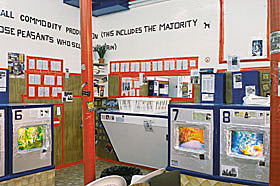


















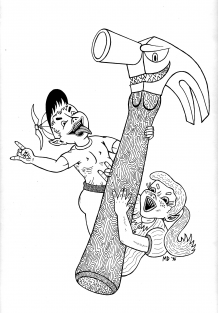





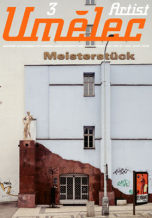
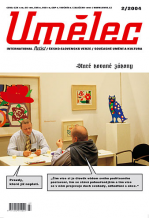
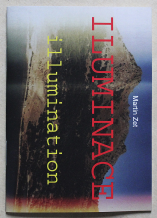


 We Are Rising National Gallery For You! Go to Kyjov by Krásná Lípa no.37.
We Are Rising National Gallery For You! Go to Kyjov by Krásná Lípa no.37.
Comments
There are currently no comments.Add new comment